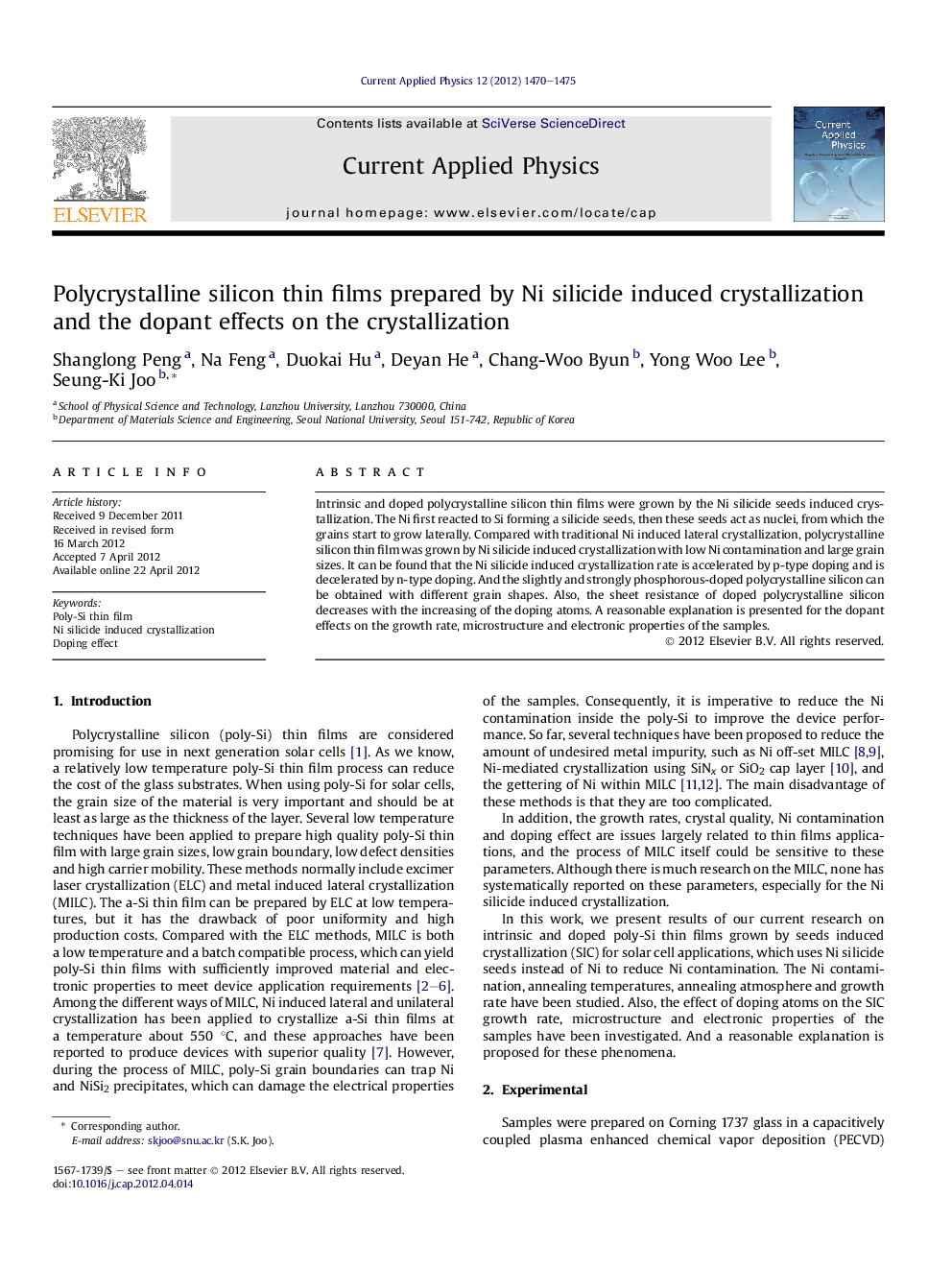| Article ID | Journal | Published Year | Pages | File Type |
|---|---|---|---|---|
| 1787887 | Current Applied Physics | 2012 | 6 Pages |
Intrinsic and doped polycrystalline silicon thin films were grown by the Ni silicide seeds induced crystallization. The Ni first reacted to Si forming a silicide seeds, then these seeds act as nuclei, from which the grains start to grow laterally. Compared with traditional Ni induced lateral crystallization, polycrystalline silicon thin film was grown by Ni silicide induced crystallization with low Ni contamination and large grain sizes. It can be found that the Ni silicide induced crystallization rate is accelerated by p-type doping and is decelerated by n-type doping. And the slightly and strongly phosphorous-doped polycrystalline silicon can be obtained with different grain shapes. Also, the sheet resistance of doped polycrystalline silicon decreases with the increasing of the doping atoms. A reasonable explanation is presented for the dopant effects on the growth rate, microstructure and electronic properties of the samples.
► The intrinsic and doped a-Si film can be crystallized with good crystallinity and lower Ni concentration by the Ni silicide seeds. ► The grains grow into a needle and disk shape for low phosphorous concentrations and high phosphorous concentrations. ► The sheet resistance of doped poly-Si films decreases as the doping gas flow increases.
